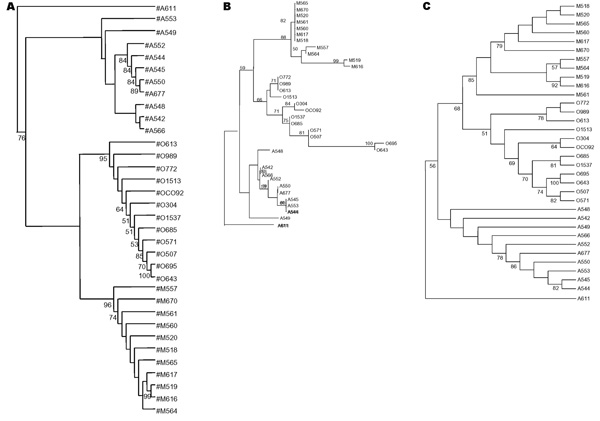Volume 10, Number 9—September 2004
Research
Genotyping, Orientalis-like Yersinia pestis, and Plague Pandemics
Appendix Figure 3

Appendix Figure 3. Unrooted trees showed the phylogenetic relationships among the 35 studied Yersinia pestis isolates inferred from sequence analysis of the combination of the eight intergenic spacers by using the parsimony (A), neighbor-joining (B), and maximum likelihood method (C).
Page created: March 03, 2014
Page updated: March 03, 2014
Page reviewed: March 03, 2014
The conclusions, findings, and opinions expressed by authors contributing to this journal do not necessarily reflect the official position of the U.S. Department of Health and Human Services, the Public Health Service, the Centers for Disease Control and Prevention, or the authors' affiliated institutions. Use of trade names is for identification only and does not imply endorsement by any of the groups named above.